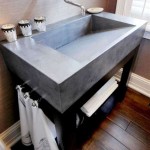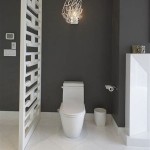How To Lock a Bathroom Door From the Inside
Ensuring privacy in a bathroom is crucial for personal comfort and security. The primary mechanism for achieving this is a functioning lock. This article provides a comprehensive guide to understanding, troubleshooting, and, if necessary, replacing common bathroom door lock mechanisms to ensure they effectively secure the space from unwanted entry.
Understanding Common Bathroom Door Lock Mechanisms
Bathroom door locks are generally simpler in design than exterior door locks, prioritizing privacy over robust security. Several types are commonly found in residential bathrooms. The most prevalent is the privacy doorknob, featuring a push-button or twist-turn mechanism on the interior side. Activating this mechanism extends a small bolt into the strike plate on the door frame, preventing the door from being opened from the outside. These locks often include an emergency release hole on the exterior, usually accessible with a small tool like a paperclip or specialized key, providing a way to unlock the door in case of an emergency, such as a child accidentally locking themselves inside.
Another common type is the privacy lever handle. These operate on the same principle as privacy doorknobs, utilizing a button or lever on the inside to engage a bolt. Lever handles are often preferred for accessibility, particularly for individuals with limited hand strength or mobility, as they require less gripping force to operate. Like privacy doorknobs, lever handles typically include an emergency release feature on the exterior side.
Less common but still present in some homes are deadbolt locks. While more often associated with exterior doors, a small single-cylinder deadbolt might be installed on a bathroom door for enhanced privacy. These deadbolts require a key to lock from the inside, and may or may not include an emergency release feature on the outside. The presence of a deadbolt is usually indicative of a deliberate effort to increase security beyond basic privacy.
Regardless of the specific type, all bathroom door locks share the same fundamental purpose: to provide a temporary barrier against unwanted entry while the occupant is using the bathroom. The effectiveness of these locks depends on their proper installation, maintenance, and functionality.
Diagnosing Lock Problems and Performing Basic Troubleshooting
Before attempting any repairs or replacements, it is essential to accurately diagnose the problem with the bathroom door lock. Several issues can prevent a lock from functioning correctly. One common problem is a misaligned strike plate. The strike plate is the metal plate attached to the door frame where the bolt from the doorknob or lever engages. If the strike plate is not properly aligned with the bolt, the bolt will not be able to fully extend, and the door will not lock securely. Misalignment can occur due to settling of the house, warping of the door frame, or loose screws.
Another frequent issue is a sticky or jammed bolt. This can be caused by dirt, dust, or debris accumulating inside the lock mechanism, preventing the bolt from moving freely. Lubrication can often resolve this issue. Use a silicone-based lubricant or graphite powder, specifically designed for locks, to avoid attracting more dirt. Avoid using oil-based lubricants, as they can attract dust and grime over time, exacerbating the problem.
Loose hardware, such as screws or knobs, can also affect the lock's functionality. Check all screws on the doorknob, lever, and strike plate to ensure they are tightened securely. Loose knobs or levers can prevent the internal mechanism from engaging properly, leading to a failure to lock. Stripped screw holes can be repaired using wood glue and small wooden dowels or toothpicks to provide a more secure grip for the screws.
A warped or swollen door can also interfere with the lock's operation. Changes in humidity can cause wood doors to expand and contract, leading to misalignment with the door frame and strike plate. In extreme cases, the door may need to be planed down to fit properly within the frame. Temporary solutions include adjusting the strike plate to accommodate the altered door position. However, addressing the underlying moisture issue is crucial for a long-term fix.
To troubleshoot a lock problem, systematically examine each component. First, visually inspect the strike plate alignment and tighten any loose screws. Next, attempt to operate the lock mechanism and observe whether the bolt extends smoothly. If the bolt is sticky, apply lubricant. If the door is difficult to close or latch, check for warping or swelling. By identifying the specific symptom, it becomes easier to pinpoint the root cause of the problem.
Repairing or Replacing the Bathroom Door Lock
Once the problem has been diagnosed, appropriate action can be taken to repair or replace the lock. For a misaligned strike plate, the first step is to loosen the screws holding the strike plate in place. Then, carefully reposition the strike plate to align with the bolt. You may need to slightly enlarge the opening in the strike plate using a file or chisel to allow the bolt to enter smoothly. Once the strike plate is properly aligned, tighten the screws securely.
If lubricating the bolt does not resolve the issue of a sticky or jammed mechanism, further disassembly may be necessary. Remove the doorknob or lever handle according to the manufacturer's instructions. This typically involves loosening a set screw or pressing a small button on the handle or escutcheon. Once the handle is removed, the internal mechanism can be accessed. Carefully clean the mechanism with a brush and solvent to remove any accumulated dirt or debris. Re-lubricate the parts and reassemble the lock.
In cases where the lock mechanism is damaged beyond repair, or if the existing lock is outdated or insecure, replacement is the most practical solution. When selecting a replacement lock, ensure it is compatible with the existing door preparation. Measure the backset (the distance from the edge of the door to the center of the doorknob hole) and the door thickness to ensure a proper fit. Consider purchasing a lock with similar functionality and style to the existing hardware to maintain a consistent aesthetic.
Installing a new bathroom door lock is a straightforward process that can be accomplished with basic tools. Begin by removing the old lock mechanism. This typically involves removing the screws holding the faceplate to the door edge and then sliding the mechanism out of the door. Insert the new lock mechanism into the door, aligning the faceplate with the edge of the door. Secure the faceplate with screws. Next, install the doorknobs or lever handles according to the manufacturer's instructions. Ensure the handles are properly aligned and secured. Finally, install the strike plate on the door frame, aligning it with the bolt. Test the lock to ensure it operates smoothly and securely.
When replacing a lock, carefully examine the existing strike plate. If it is worn or damaged, replace it with a new strike plate. A worn strike plate can reduce the security of the lock and make it easier to force the door open. When installing a new strike plate, ensure it is securely attached to the door frame using long screws that penetrate into the framing behind the trim. This will provide a stronger and more secure anchor for the strike plate.
When working on any lock mechanism, it is important to exercise caution and follow safety precautions. Disconnect the power to any electrical components before disassembling the lock. Wear safety glasses to protect your eyes from debris. Use the appropriate tools for the job to avoid damaging the lock or injuring yourself. If you are unsure about any aspect of the repair or replacement process, consult a qualified locksmith.
Regular maintenance is essential to ensure the longevity and proper functioning of bathroom door locks. Periodically lubricate the lock mechanism, tighten any loose screws, and inspect the strike plate for wear or damage. Addressing minor issues promptly can prevent more serious problems from developing and ensure the privacy and security of the bathroom.

Bathroom Door Lock Types A Helpful Guide With Images

How To Lock A Door Without 10 Brilliant Solutions Bob Vila

Bathroom Door Lock Types A Helpful Guide With Images

Bathroom Door Lock Types A Helpful Guide With Images

Bathroom Door Locked From Inside Unlocking A The Outside

Sliding Barn Door Locks 5 Solutions Making Maanita

Best Door Locks Which Should You Use For Your Doors Doordeals

How To Lock A Door Without 10 Brilliant Solutions Bob Vila

8 Ways To Unlock A Door Knob With Hole In The Side

Bathroom Door Lock Types A Helpful Guide With Images
Related Posts







